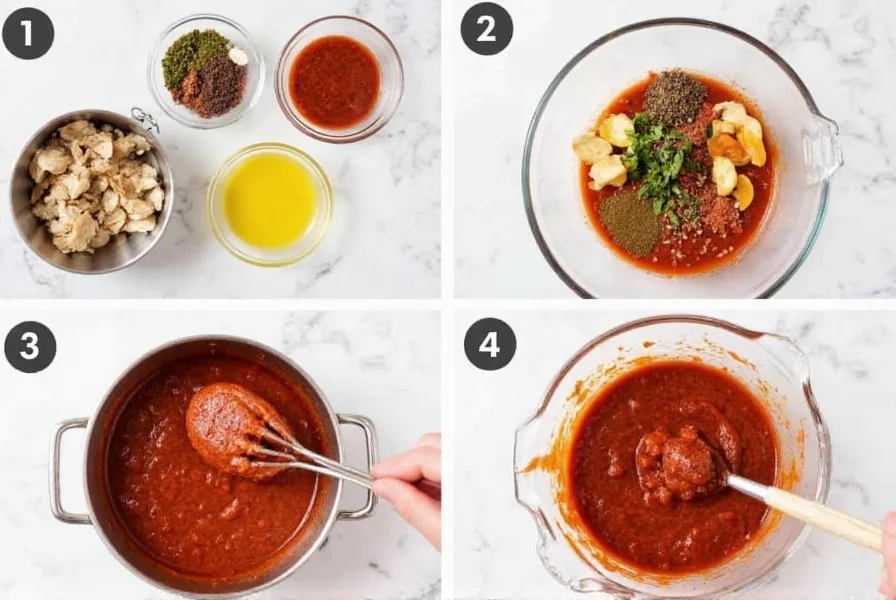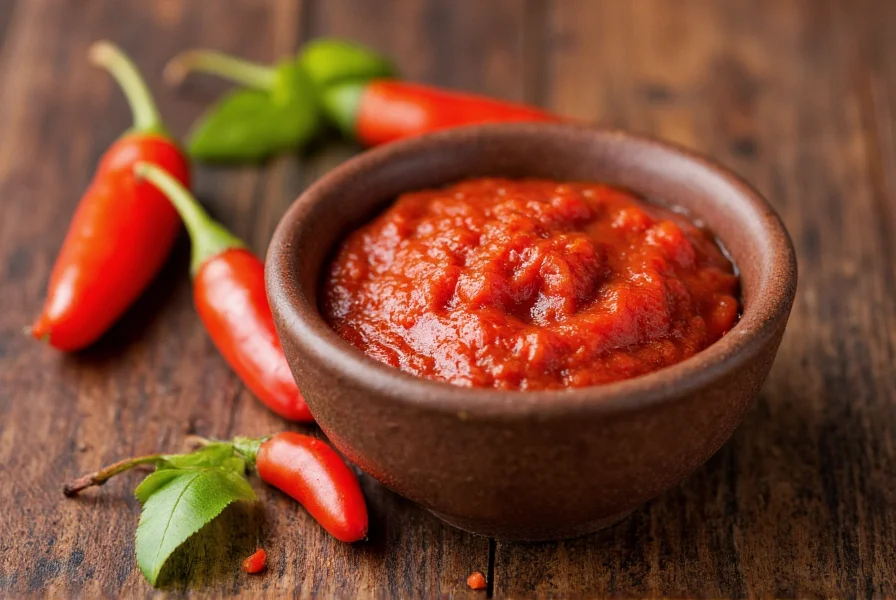If you've ever reached for chili paste only to find your jar empty, you're not alone. This versatile ingredient appears in countless global recipes, from Thai curries to Mexican mole. Understanding effective chili paste alternatives ensures your cooking never hits a dead end. The right substitute depends on your recipe's specific requirements, including desired heat level, flavor profile, and texture.
Understanding Chili Paste Characteristics
Before selecting a substitute, recognize what makes chili paste unique. Traditional chili paste combines ground chilies with vinegar, garlic, and sometimes sugar or salt. Asian varieties like sambal oelek maintain simplicity with just chilies and vinegar, while others like gochujang include fermented soybeans and sweeteners. This variation explains why no single substitute works universally across all cuisines.

Top 7 Effective Chili Paste Alternatives
1. Sriracha Sauce
Suitable for: Asian-inspired dishes, dipping sauces, marinades
Ratio: Use 1:1 replacement
Why it works: Shares similar garlic-forward profile and moderate heat. Contains vinegar for acidity but has a sweeter profile than traditional chili paste. Best for recipes where garlic complements other ingredients.
2. Sambal Oelek
Suitable for: Indonesian, Malaysian, and general Southeast Asian cooking
Ratio: Use 1:1 replacement
Why it works: This Indonesian chili paste contains only chilies, vinegar, and salt—making it the closest match in texture and heat. Lacks the garlic notes of some chili pastes but provides pure chili flavor without additional seasonings.
3. Gochujang (Korean Red Pepper Paste)
Suitable for: Korean recipes, braises, glazes
Ratio: Use 1:1 but reduce sugar by 1/2 teaspoon per tablespoon
Why it works: Offers complex fermented flavor with sweet and umami notes. Thicker than standard chili paste, so thin with rice vinegar if needed. Excellent for marinades but requires sugar adjustment in non-Korean dishes.
4. Harissa Paste
Suitable for: North African, Mediterranean, and roasted vegetable dishes
Ratio: Use 3/4:1 (reduce by 25%)
Why it works: This North African chili paste brings smoky depth from roasted red peppers and spices like cumin and coriander. More complex flavor profile makes it ideal for stews and roasted dishes but less suitable for delicate Asian recipes.
| Alternative | Best For | Substitution Ratio | Adjustments Needed |
|---|---|---|---|
| Sriracha | Asian stir-fries, marinades | 1:1 | None for most recipes |
| Sambal Oelek | Indonesian/Malaysian dishes | 1:1 | Add garlic if needed |
| Gochujang | Korean recipes | 1:1 | Reduce sugar by 1/2 tsp per tbsp |
| Tomato Paste + Red Pepper Flakes | Western dishes, pizza sauces | 1 tbsp tomato paste + 1/2 tsp flakes | Add vinegar for acidity |
| Chipotle in Adobo | Mexican, BBQ recipes | 1:1 | Reduce liquid elsewhere |
DIY Quick-Substitute Solutions
When commercial alternatives aren't available, create your own chili paste substitute using pantry staples:
Basic Pantry Substitute
Mix 1 tablespoon tomato paste with 1/2 teaspoon red pepper flakes and 1 teaspoon vinegar. This combination mimics the texture and acidity of many chili pastes while providing adjustable heat. For Thai recipes, add 1/4 teaspoon fish sauce; for Mexican dishes, include 1/4 teaspoon cumin.
Garlic-Infused Alternative
Combine 2 minced garlic cloves with 1 tablespoon hot sauce and 1 teaspoon oil. Sauté briefly to mellow the raw garlic flavor. This works particularly well for recipes where garlic is a key component of the original chili paste.

Recipe-Specific Recommendations
Not all substitutes work equally well across different cuisines. Consider these specific recommendations:
- For Thai curries: Use red curry paste at a 1:1 ratio. The additional herbs and spices maintain authentic flavor better than simpler alternatives.
- For Chinese stir-fries: Opt for doubanjiang (broad bean paste) at 3/4:1 ratio, as it provides similar fermented depth without overwhelming heat.
- For Mexican mole: Blend chipotle peppers in adobo with a touch of chocolate for authentic smoky-sweet complexity.
- For pizza or pasta sauces: Combine tomato paste with crushed red pepper and olive oil for balanced heat without altering the base flavor.
Avoiding Common Substitution Mistakes
Many home cooks make these critical errors when substituting chili paste:
- Ignoring regional differences: Using gochujang in Thai recipes creates flavor confusion due to its sweet, fermented profile.
- Overlooking texture: Liquid hot sauces require reduction to match the thick consistency of most chili pastes.
- Misjudging heat levels: Habanero-based sauces provide significantly more heat than standard chili paste—start with half the recommended amount.
- Forgetting acid balance: Most chili pastes contain vinegar—omit additional acid if using sriracha or sambal oelek.
Storage Tips for Homemade Alternatives
When preparing larger batches of substitute pastes, proper storage maintains freshness and flavor. Store in airtight containers in the refrigerator for up to two weeks. For longer preservation, freeze in ice cube trays then transfer to freezer bags—each cube equals approximately one tablespoon. Always label with date and specific blend composition, as visual differences between alternatives can be minimal.











 浙公网安备
33010002000092号
浙公网安备
33010002000092号 浙B2-20120091-4
浙B2-20120091-4